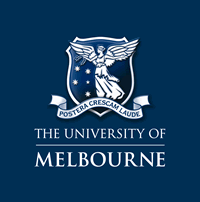Nanomaterials synthesis can open new possibilities for the treatment of cancer.
Despite significant advances in cancer therapy over the past decades, cancer remains the number one cause of death worldwide. In the last years there has been increasing interest in the development of new treatment modalities with reduced side effects for difficult-to-cure cancers. A prominent example is Photodynamic Therapy (PDT), designed to selectively kill cancerous tissue through localized, light-induced oxidative stress.
The development of nanomaterials marks a significant step forward in photodynamic therapy of cancers. Nanomaterials smaller than 200 nm accumulate in the tumour tissue and exhibit strong absorption in the near-infrared range, making them effective photogenerators of reactive oxygen species, such as singlet oxygen, that induce cell death. Nanomaterial-mediated PDT may improve current clinical PDT employing molecular photosensitizers, but the relationship between nanoparticle size and surface chemistry, and PDT mechanism and efficiency remains an open question. This project aims to answer this question using microscopy to monitor singlet oxygen generation and cell death pathways simultaneously.
To mimic the physiological features present in solid tumors most accurately, multicellular tumor spheroids will be used. The fabrication and characterisation of novel nanomaterials will also be a major part of this project, targeting lanthanide nanocrystals with enhanced solid tumor penetration and efficient singlet oxygen sensitization using long wavelength light.
Finally, near-infrared camera technology will be employed to directly map intracellular singlet oxygen via its luminescence. The information obtained thereby will be crucial for the rational design of next-generation nanomaterials for targeted light-mediated cancer therapies.
The aim of The University of Melbourne based project is to synthesize novel lanthanide and TMD nanomaterials (1st year in Melbourne) and to investigate the mechanisms of their PDT effect in 3D cellular models of solid tumors (2nd year, Leuven). The efficiency of PDT is expected to be a complex function of nanoparticle penetration into various layers of the spheroid cell aggregates, and the oxygen gradients naturally present therein, as discussed earlier.
The goal will be single-cell resolution spatial mapping of singlet oxygen generation during photodynamic therapy of solid tumor mimics by the end of the second year. Up to that point in the project, all information on singlet oxygen generation must be obtained indirectly, via fluorescent probes of singlet oxygen using visible wavelength detection.
In the final year of the project, The University of Melbourne based PhD student will bring expertise in culturing 3D cell models and PDT back to Melbourne and construct a microscope with near-IR detection to measure singlet oxygen directly via its emission at 1268 nm.

 Continue with Facebook
Continue with Facebook



